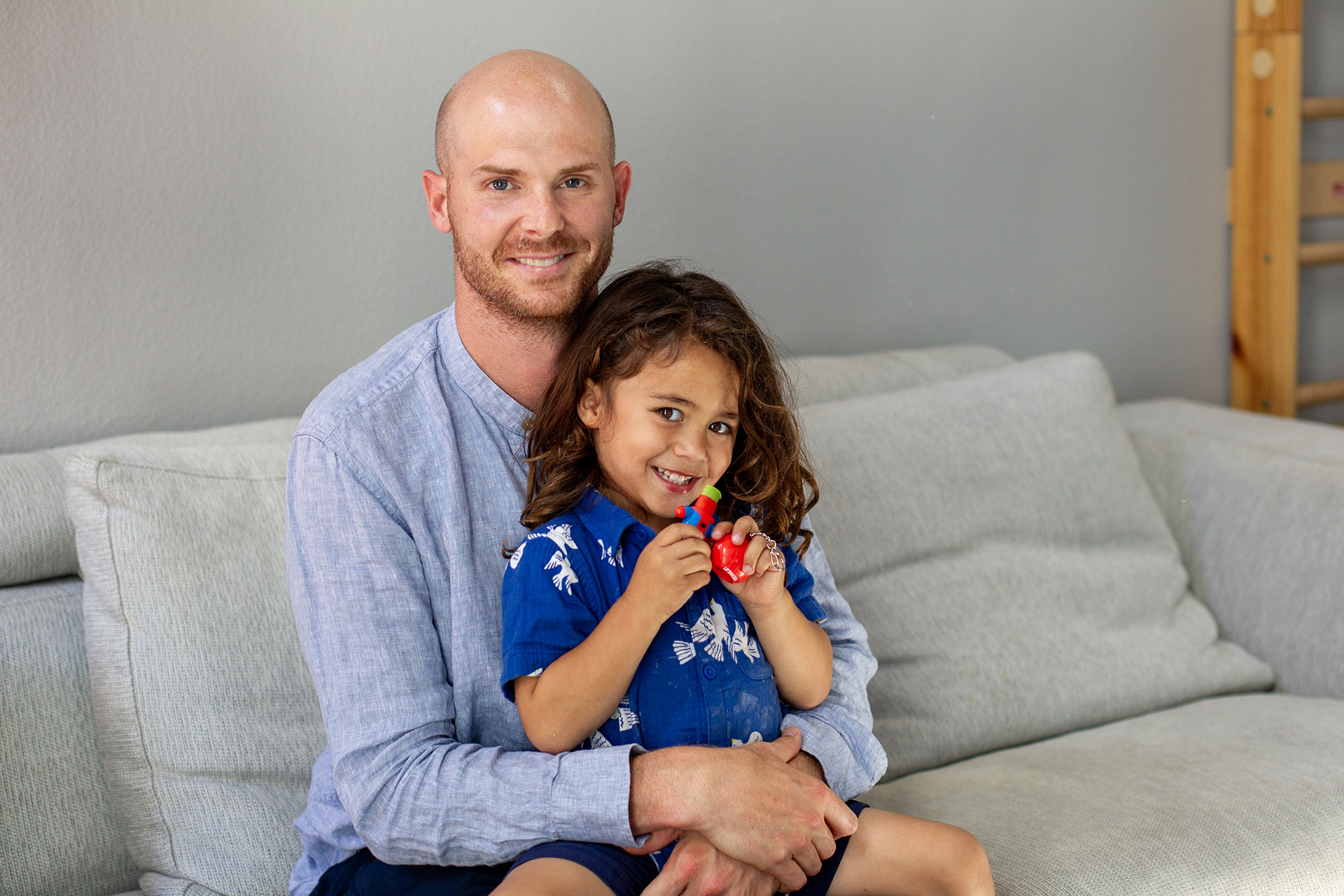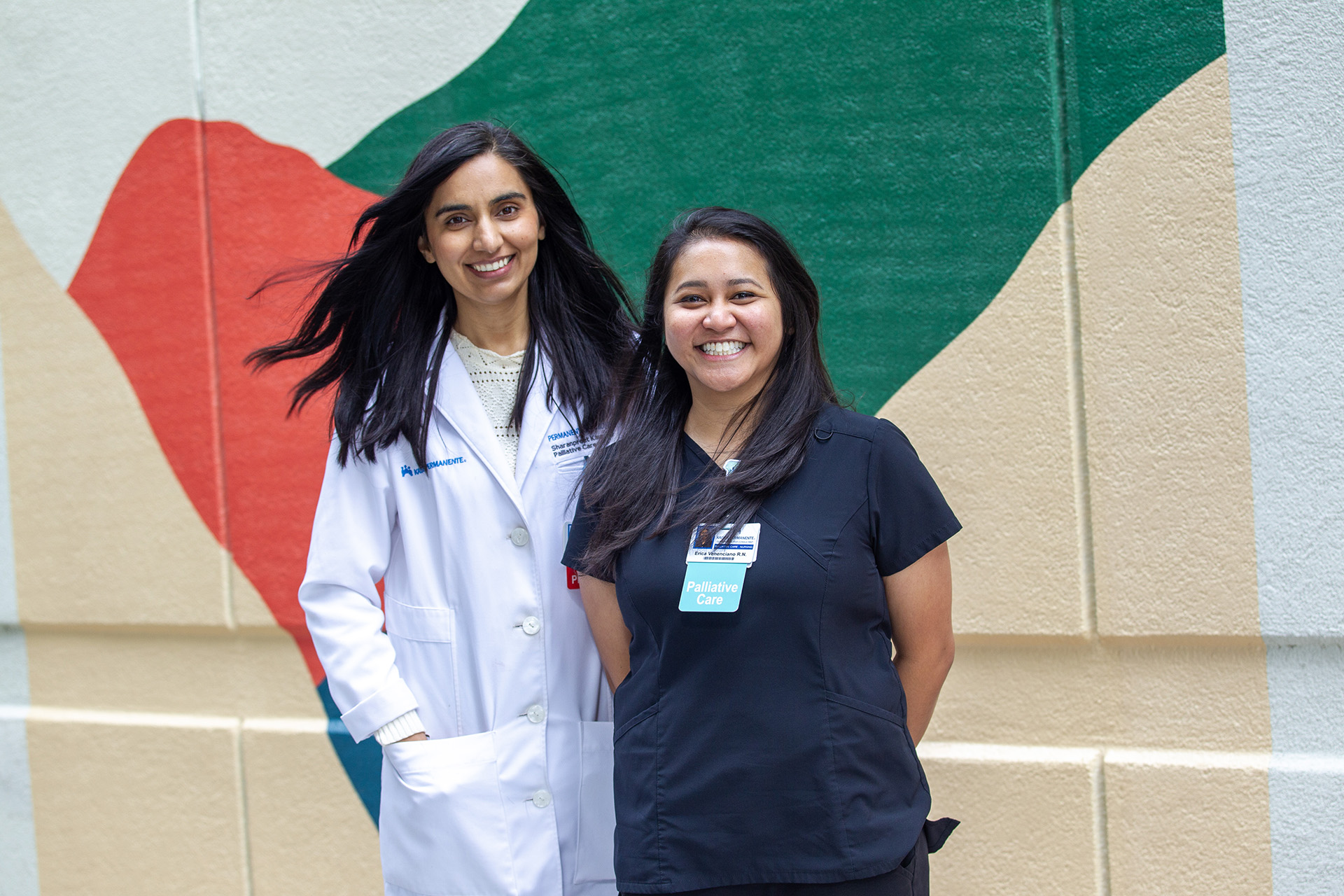Thirty-four-year-old Ben Ruehle of Hercules, California, had always been a competitive athlete, from high school and college basketball to regular 20-mile trail races.
Occasionally working out to the point of exhaustion, he would then see if he could go a little farther.
But one day, the fit father of 2 toddlers was confronted with heavy news: He learned that family members had died of a deadly aortic dissection, and that his own aorta was also significantly enlarged.
“When you catch something like this in a young patient, it helps you avoid a catastrophic event where the aorta ruptures and the patient dies or the aorta dissects and you have a surgical emergency, in which case the chances of survival are low.” David Scoville, MD, PhD.
He faced a dilemma: Live with a growing and precarious aortic aneurysm or have part of his aorta replaced in a complex open-chest operation that only a handful of surgeons in the San Francisco Bay Area are skilled enough to undertake successfully.
“There was a moment when I realized I had this defect, and it was large enough that I was essentially in danger, especially with my sports,” said Ruehle, a neonatal intensive care nurse at Kaiser Permanente Oakland Medical Center. “I’ve always worked out really hard, and I had to stop all that when I learned about this aneurysm in my aorta, and particularly with my family history.”
Ruehle had previously been diagnosed with the aneurysm in 2008 after his sister was found to have one. But at the time, it was small enough not to worry, and he was advised to follow up every 2 years.
Fifteen years later, after sensing something was not quite right, he was referred to Kaiser Permanente’s Northern California Center for Thoracic Aortic Disease, started by cardiologist Matthew Solomon, MD, PhD in 2016.
Imaging tests showed the aneurysm had grown and was located at the root of his aorta, where it attaches to the heart. Given Ruehle’s family history, the location of his aneurysm, and its size, it warranted surgical treatment.
Dr. Solomon referred him to David Scoville, MD, PhD, at Kaiser Permanente Santa Clara Medical Center, who confirmed Ruehle would need surgery to correct it.
“My journey became beautiful when I met Dr. Scoville,” said Ruehle, who credits a mindfulness practice for helping him stay calm during the period leading up to his surgery and in the days since. “After I met him, I felt really confident I was going to be in good hands and that has held true the entire way. I cancelled all my races I had signed up for, and I had the surgery March 27. I am very grateful for this aortic program.”
Affecting lives in a big way
Dr. Scoville said he is one of 3 Kaiser Permanente surgeons trained in “valve-sparing aortic root replacements,” which means the root of the aorta where it comes out of the heart is repaired, but the heart valve connecting the 2 remains intact.
“What I did with Ben was really specialized,” said Dr. Scoville. “I detached the aortic valve from its connections to the aortic root aneurysm and then re-implanted the valve inside of a synthetic polyester graft. During this procedure the origin of both the right and left coronary arteries are removed and then re-attached to the graft. He’s really athletic, so this should allow him to get back to being active, though we recommend keeping activity at a moderate level given his family history.”
Dr. Scoville said he enjoys the team aspect of heart surgery with his Kaiser Permanente colleagues and the ability to “affect people’s lives in a big way.”
“These aneurysms can kill pretty quickly, so to be involved in surgical solutions like this that are so much more advanced than they were 30 years ago is pretty amazing,” he said. “When you catch something like this in a young patient, it helps you avoid a catastrophic event where the aorta ruptures and the patient dies or the aorta dissects and you have a surgical emergency, in which case the chances of survival are low.”
A genetic link
During his journey, Ruehle learned his genetic predisposition for aortic aneurysm is common in his family.
“I chatted with my family and learned I had an uncle and aunt who both had aneurysms that dissected, my dad had one, and my sister and cousins have them,” he said.
That information was critical to help define Ruehle’s treatment course and his long-term management, Dr. Solomon said.
“Screening for a family history of aortic disease is one of the most important things we do, as it is often overlooked, but really is one of the most important clues that an aneurysm needs more aggressive treatment,” he said.
Five months after his surgery, Ruehle said he is running again, now up to a mile or 2 at a time, but at a moderate pace, without exercising to exhaustion. He hopes to eventually get back up to 20 miles while staying within the recommendations from his physicians.
“I’m really glad this aortic program exists,” said Ruehle. “It’s a real asset to the community, and now I can get back to my life.”




